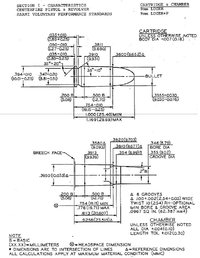walter62
NES Member
I've just started reloading 9mm on a Dillon 750 (w/ Lee carbide dies and separate crimp die).
The book want 1.160" in COL. Using mixed brass
Some questions:
How much (in 0.001's) variation on COL would you expect from a 750?
Should I compensate for the small amount of setback during the crimp? (I've seen this a few times)
Is the 1.160 the *minimum* so then variation should be accounted for by biasing the length a little.
A couple of them are 1.158, are those safe?
What do *YOU* accept as amount of reloading variation in COL?
The book want 1.160" in COL. Using mixed brass
Some questions:
How much (in 0.001's) variation on COL would you expect from a 750?
Should I compensate for the small amount of setback during the crimp? (I've seen this a few times)
Is the 1.160 the *minimum* so then variation should be accounted for by biasing the length a little.
A couple of them are 1.158, are those safe?
What do *YOU* accept as amount of reloading variation in COL?

